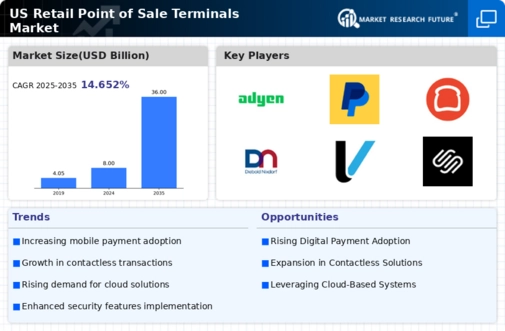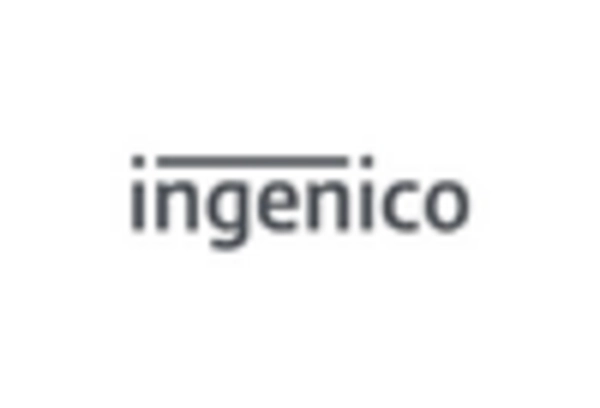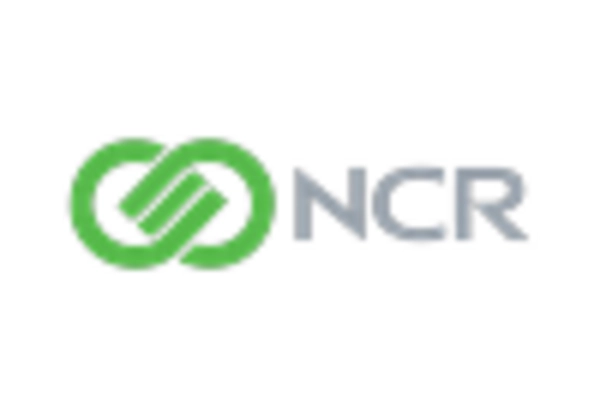Regulatory Compliance and Standards
The retail point-of-sale-terminals market is also driven by the need for regulatory compliance and adherence to industry standards. As payment security regulations evolve, retailers must ensure that their point-of-sale systems meet these requirements. Compliance with standards such as PCI DSS (Payment Card Industry Data Security Standard) is crucial for protecting customer data and maintaining trust. Failure to comply can result in significant financial penalties and reputational damage. Consequently, the retail point-of-sale-terminals market is witnessing an increase in demand for compliant systems, as businesses prioritize security and regulatory adherence in their operations.
Shift Towards Cloud-Based Solutions
there is a shift towards cloud-based solutions, which offer flexibility and scalability for retailers. Cloud-based systems allow businesses to access their point-of-sale data from anywhere, facilitating real-time inventory management and sales tracking. This trend is particularly appealing to small and medium-sized enterprises that may lack the resources for traditional systems. The cloud-based segment of the retail point-of-sale-terminals market is expected to grow by approximately 25% over the next few years, as more retailers recognize the benefits of reduced operational costs and enhanced data accessibility.
Growing Demand for Mobile Payment Solutions
The retail point-of-sale-terminals market is experiencing a notable surge in demand for mobile payment solutions. As consumers increasingly favor the convenience of mobile wallets and payment apps, retailers are compelled to upgrade their point-of-sale systems. This shift is reflected in a projected growth rate of approximately 15% annually for mobile payment transactions in the US. Retailers recognize that integrating mobile payment capabilities into their terminals not only enhances customer experience but also streamlines operations. Consequently, the retail point-of-sale-terminals market is adapting to accommodate these mobile solutions, ensuring that businesses remain competitive in a rapidly evolving landscape.
Rise of E-commerce and Omnichannel Retailing
The retail point-of-sale-terminals market is significantly influenced by the rise of e-commerce and omnichannel retailing strategies. As consumers increasingly engage in online shopping, retailers are integrating their physical and digital sales channels. This integration necessitates advanced point-of-sale systems that can handle transactions across various platforms. In fact, the US e-commerce sales are projected to reach $1 trillion by 2025, prompting retailers to invest in versatile point-of-sale terminals. These systems must support seamless transactions, inventory management, and customer data analytics, thereby driving growth in the retail point-of-sale-terminals market.
Technological Advancements in Payment Processing
Technological advancements in payment processing are reshaping the retail point-of-sale-terminals market. Innovations such as artificial intelligence, machine learning, and blockchain technology are enhancing transaction speed and security. Retailers are increasingly adopting these technologies to improve customer service and reduce fraud. For instance, AI-driven analytics can provide insights into consumer behavior, allowing retailers to tailor their offerings. The retail point-of-sale-terminals market is likely to see a substantial increase in the adoption of these advanced technologies, with estimates suggesting a growth of 20% in the next few years as businesses seek to optimize their payment processes.
















Leave a Comment